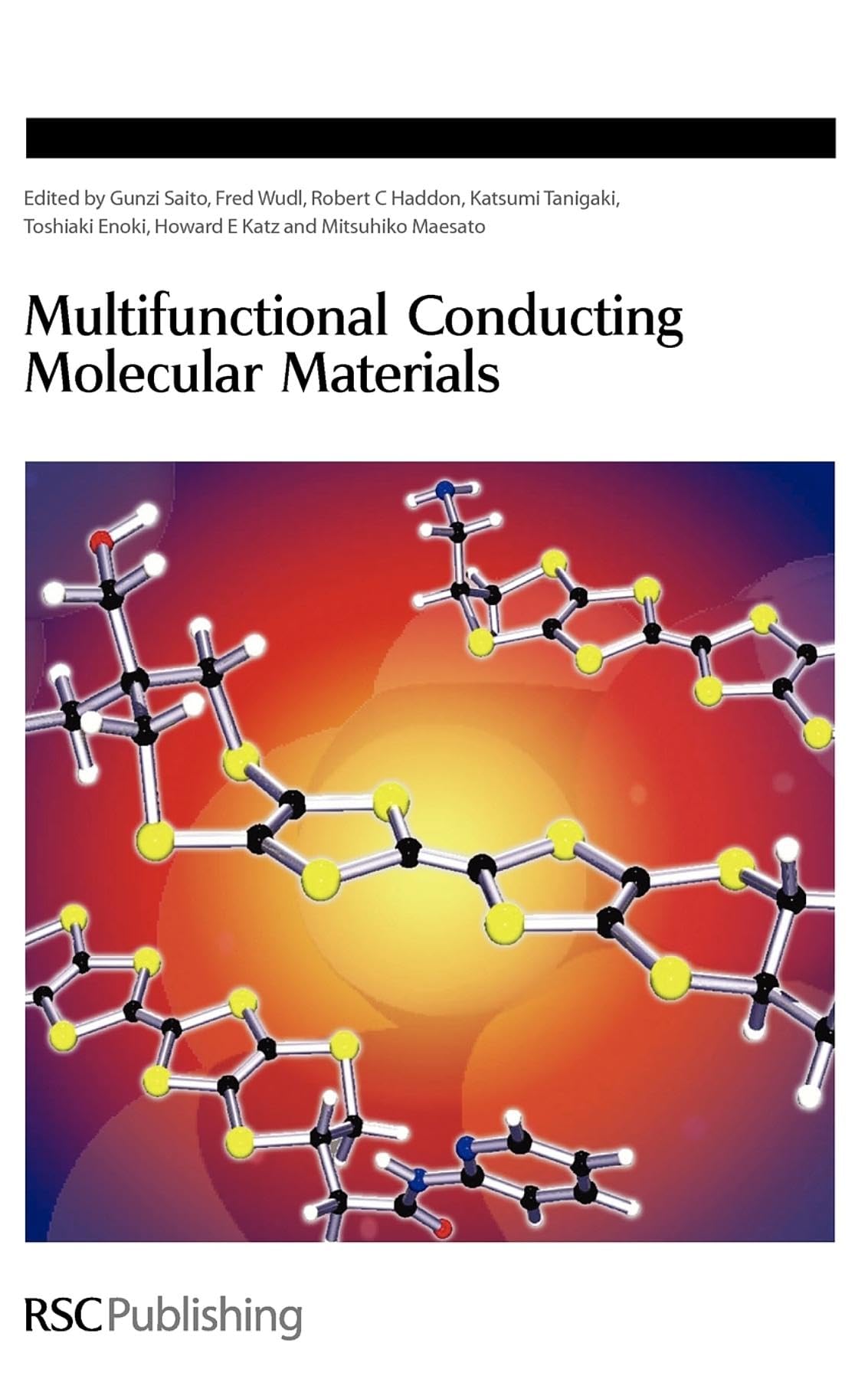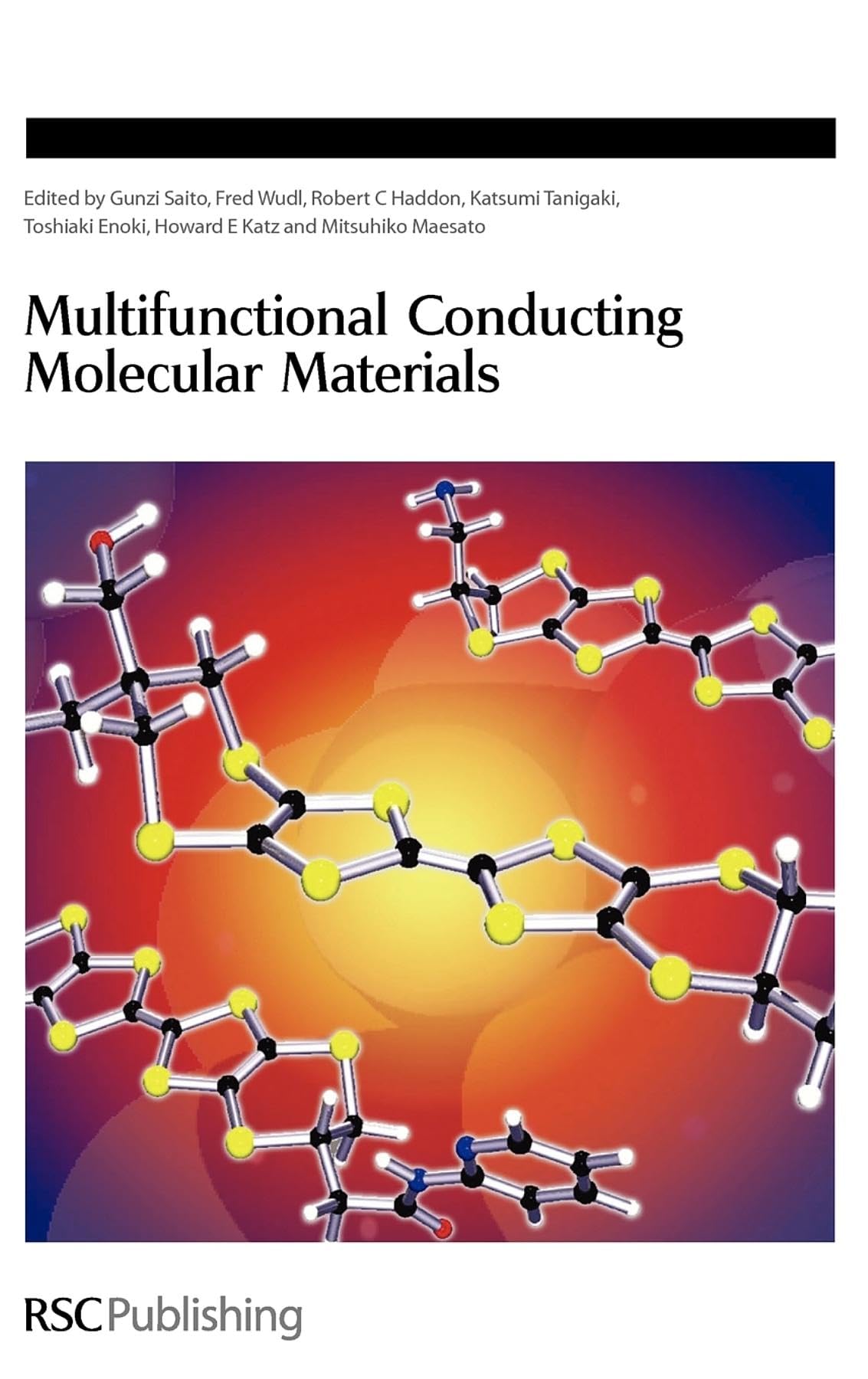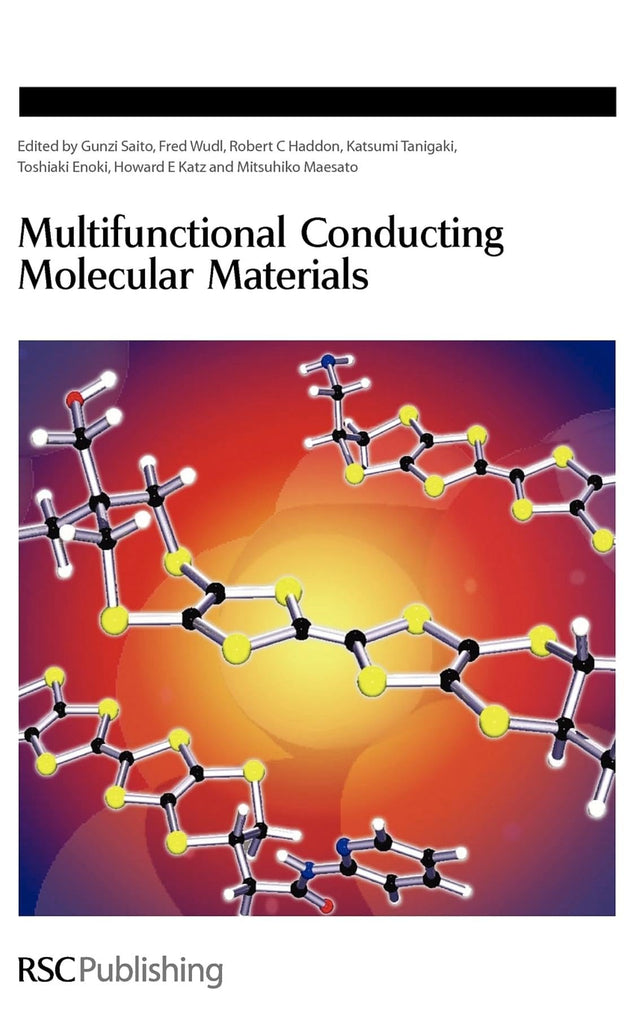Multifunctional Conducting Molecular Materials: 306 (Special Publications)
Multifunctional Conducting Molecular Materials: 306 (Special Publications) is backordered and will ship as soon as it is back in stock.
Couldn't load pickup availability
Genuine Products Guarantee
Genuine Products Guarantee
We guarantee 100% genuine products, and if proven otherwise, we will compensate you with 10 times the product's cost.
Delivery and Shipping
Delivery and Shipping
Products are generally ready for dispatch within 1 day and typically reach you in 3 to 5 days.
Author: Wudl, Fred
Brand: Royal Society of Chemistry
Edition: Nil
Binding: hardcover
Format: Import
Number Of Pages: 305
Release Date: 16-11-2006
Part Number: 1, black & white illustrations
Details: Product Description
The use of conducting molecular materials is a rapidly developing, multidisciplinary field of research, offering a wide variety of possibilities for the future. It is of particular relevance to nano fabrication and technology because it offers high density, small size integrated and multifunctional properties that can be fabricated under mild conditions. Multifunctional Conducting Molecular Materials covers a wide range of topics including: molecular conductors and superconductors; design and synthesis of functional molecular materials; organic/inorganic hybrids and photoinduced phenomena; fullerenes, nanotubes and other related nano materials. The book concludes with a look at integration and functionalities of molecular materials such as organic field effect transistors (OFET). This high level book is ideal for researchers in both industry and academia who are interested in this new and exciting field.
Excerpt. © Reprinted by permission. All rights reserved.
Multifunctional Conducting Molecular Materials
By Gunzi Saito, Fred Wudl, Robert C. Haddon, Katsumi Tanigaki, Toshiaki Enoki, Howard E. Katz, Mitsuhiko Maesato
The Royal Society of Chemistry
Copyright © 2007 The Royal Society of Chemistry
All rights reserved.
ISBN: 978-0-85404-496-2
Contents
Molecular Conductors and Superconductors,
Design and Synthesis of Functional Molecular Materials,
Organic/Inorganic Hybrids and photoinduced phenomena,
Fullerenes, Nanotubes and Other Related Nano Materials,
Integration and Functionalities of Molecular Materials,
Subject Index, 302,
CHAPTER 1
MESOMERIC FUSED BETAINIC RADICALS AS ORGANIC CONDUCTORS
G. Saito, K. Balodis, Y. Yoshida, M. Maesato, H. Yamochi, S. Khasanov, and T. Murata
1 INTRODUCTION
Varieties of one- to two-dimensional (ID, 2D) metallic and superconducting organic solids have been developed based on charge transfer (CT) complexes composed of donor and acceptor molecules, e.g. TTF, BEDO-TTF (BO), BEDT-TTF (ET), TCNQ, p-chloranil etc. (Scheme 1). They are multi-component conductors. As for the solids of uni-component, such features have been achieved only by specific physical methodology, namely high pressure, except for a few rare cases which include transition metals. Their transport properties have essentially been treated by band theory. For uni-molecule, on the other hand, metallic features have not yet been realized, where the transport phenomena are considered theoretically as either tunneling, ballistic or loop current. In the latter two cases the scattering events are of negligible probability, and the elastic mean free path λ of the carriers within a molecule limits such transport regime.
Studies of the electron transport in CT and uni-component solids have given two important issues which may be related with the transport in a uni-molecular conducting wire (i.e. molecular wire): I) the electron correlation U is of crucial importance for the organic metal, and 2) electron mean free path is not much longer than the lattice constant. As for the latter issue, the estimated intermolecular mean free path λinter is ~3Å at room temperature (RT) for an organic metal TTF·TCNQ, where dissipation events are mainly originated from defect, electron-phonon interaction, electron-molecular vibration coupling, conformational change of molecule and electron-electron interaction (U). In a molecular wire, the last three events will be the main sources of dissipation. Since the λ is proportional to the square of transfer integral t, the intramolecular mean free path λintra of TTF and TCNQ type molecules is estimated as 24-39 Å (λintra/λinter) = 0.7-0.9 eV/0.25-0.3 eV), which is not longer than the molecular length of the molecular wire proposed by many authors. Therefore, electron migration will be dissipated within a molecular wire before reacting to anodic electrode and ballistic transport is hardly achieved. That is a remarkable contrast between molecular and atomic wires (cf. λ,
EAN: 9780854044962
Package Dimensions: 9.1 x 6.3 x 0.9 inches
Languages: English





